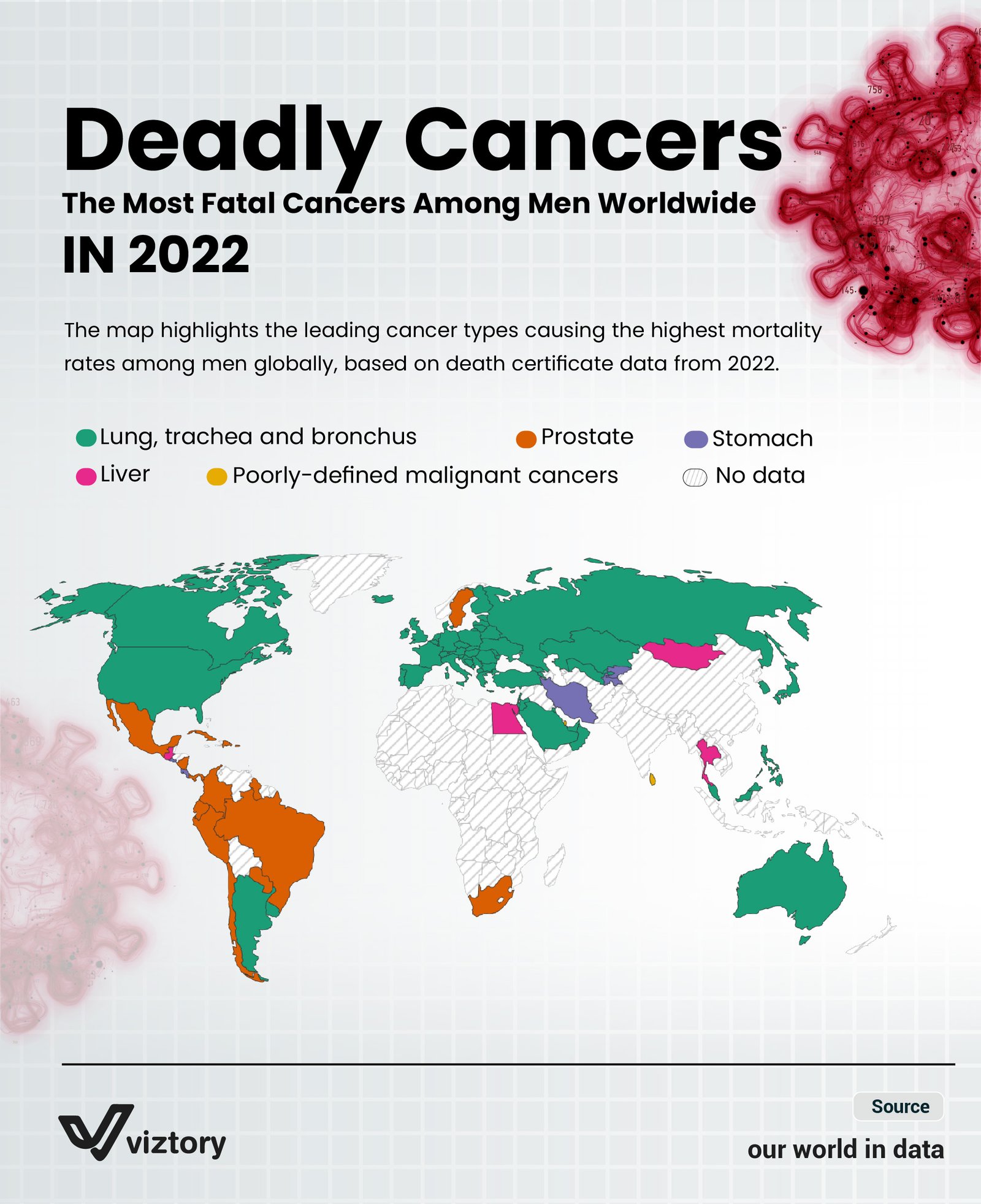The Most Fatal Cancers Among Men Worldwide in 2022
-
Jan, Tue, 2025
The visualization reveals a global map highlighting the most fatal cancers among men in 2022, based on mortality data from death certificates. It classifies cancer types, including lung, trachea, and bronchus cancer; prostate cancer; stomach cancer; liver cancer; and poorly-defined malignant cancers. This data sheds light on the pervasive impact of cancer on men’s health worldwide.
The Global Health Impact of Cancer
Cancer remains one of the leading causes of death globally. According to the visualization, lung, trachea, and bronchus cancers dominate as the primary causes of mortality in many regions, particularly in North America, Europe, and parts of Asia. These cancers are often linked to lifestyle factors such as smoking, air pollution, and occupational hazards.
Prostate cancer, prominent in parts of South America and Africa, reflects disparities in healthcare access and early detection practices. Meanwhile, liver cancer, prevalent in regions like Southeast Asia, correlates with factors such as hepatitis infections and alcohol consumption. Stomach cancer’s significant presence in specific areas underscores the impact of diet, genetic predisposition, and infection by Helicobacter pylori.
Cancer and Its Broader Health Implications
The health implications of cancer extend far beyond physical suffering. A diagnosis not only affects patients but also places emotional and financial stress on families and healthcare systems. Preventable factors, such as tobacco use, alcohol consumption, poor diets, and lack of exercise, are linked to a large percentage of cancer cases. However, the global variation in mortality rates demonstrates that healthcare systems, prevention strategies, and treatment access significantly influence outcomes.
Additionally, the rise of poorly-defined malignant cancers in some regions highlights the need for better diagnostic tools and healthcare infrastructure. Accurate identification of cancer types is essential for targeted treatments and improved survival rates.
Addressing Cancer through Public Health Initiatives
To reduce cancer mortality globally, robust public health strategies are necessary. These include widespread cancer awareness campaigns, improved access to early screening programs, and the promotion of healthy lifestyle choices. Governments and healthcare organizations must invest in research to understand regional cancer patterns better and develop tailored interventions.
The integration of technology into healthcare also holds promise. For instance, artificial intelligence can assist in the early detection of cancers, while telemedicine improves access to specialists in remote areas. Additionally, fostering international collaboration in research and resource-sharing can accelerate progress in combating this global challenge.
Conclusion
The visualization of cancer mortality among men worldwide in 2022 underscores the importance of a multifaceted approach to tackling this devastating disease. By combining prevention, early detection, and advanced treatment methods with equitable healthcare access, nations can significantly reduce the burden of cancer and improve quality of life for millions. Addressing this critical health challenge requires a united global effort, innovative solutions, and sustained commitment to improving men’s health worldwide.

